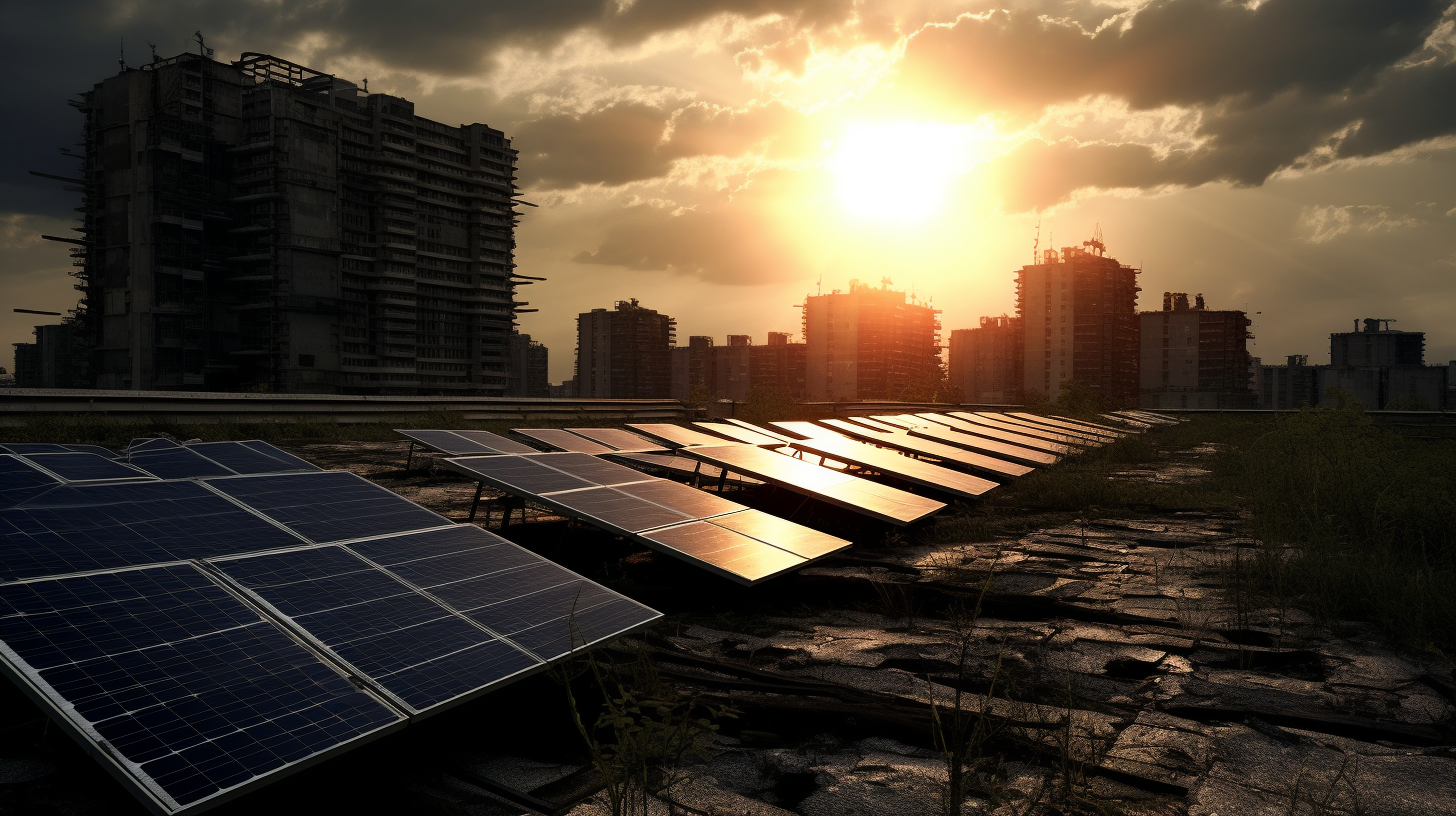In a time where the light of the world seems ever-dimming, where the once abundant radiance of the sun has become a distant memory, there emerges the heart-wrenching saga of the Solar Orphans. These are the children of the sun’s erstwhile generosity, the byproducts of a civilization that once sprawled under the boundless skies, basking in solar opulence. Their stories, set against the dusky canvas of our Green Dystopia, unfold in the crooked shadows of a once-luminous past.
‘Shadows of a Scorched Sky’ and ‘The Mirage of Fresh Air’ have brought to light the dire straits of our solar decline and air plight. Following this bleak trail, we delve deeper into a facet less spoken of—those left behind in the ruins of solar prosperity. As we pick through the remnants of this time—the dilapidated solar panels, the defunct batteries—a chorus of whispers rises from the silence, narrating the tales of the Solar Orphans.
Imagine you wake up to a gloomy dawn, with a complexioned sun trying to pierce through the smog-laden atmosphere. Gone are the days when sunrise promised new beginnings. Now, the lackluster glow paints a grim reminder of the omnipresent solar rationing. Rooftops that once glittered with the promise of energy independence have become the playgrounds of desolation, their solar arrays reduced to skeletal frames.
The Solar Orphans speak of a time remembered by few, rumored by many: the time when the sun would drench the land and the people in warmth and vitality. They tell stories of the ‘sunlit days,’ – events so surreal, they now resonate as fables to the newborn ears of the pre-dusk era. ‘To live in the sunlit days was to truly be alive,’ whisper the elders, in a tone where nostalgia is fraught with bitterness.
Amidst the tales, there emerges the irony of survival. With the inadequacy of natural light, societies have retrofitted their habits – nocturnal agriculture with artificial lighting, which shortsightedly prides itself on innovation while it feeds a cycle of energy starvation. Innovations abound, such as light-harvesting bio-luminescent trees which, despite their mesmerizing beauty, serve as a feeble attempt to imitate the grand fecundity of sun-powered growth. This irony does not escape our orphans, for they know the true worth of unfiltered sunlight which fuels life itself.
Powerful are the tales of ingenuity where communities, guided by a handful of solar aficionados, restore ancient gear to harness what little light breaks through the charcoal skies. But these acts of rebellion are akin to stealing fire from a dying ember. And the black market for solar relics is but a darkly comic testimony to human persistence, or perhaps, our follies. The orphans dream, not of wealth or of grandeur, but of unobstructed daylight, of photosynthesis in its truest form.
There’s a sorrow that clings to this narrative, a melancholy draped over the shoulders of our young. The Solar Orphans encompass a resilience that is both admirable and heartbreaking. Where the world sees perpetual twilight, they envisage the caress of daytime, crafting solar-powered toys from scraps, a reminder of the sun’s once generous nature.
Yet amidst the despondency, the question of humanity’s adaptability looms. Will we, the people of the perpetual dusk, learn to exist with these new rules, or will the Solar Orphans be a testament to the capacity for remembrance in a world moving towards forgetfulness? Their resilience provokes a chance for hope, slim as it may be in a society that shuns it.
Emboldened with the Solar Orphans’ heartrending narrative, we are compelled to ponder: Is this the legacy we set for our children? In the unsettling silence of our bleak streets, where the sun no longer kisses goodbye to twilights, are we ready to face the consequences of our ancestors’ hubris? Our stark landscapes whisper tales of the sun, of the days when its unforgotten children danced in its rays. It’s not simply the absence of light that cautions us; it’s the fading memory of the solar legacy left in the eyes of the forgotten orphans—our final vestige of a brighter epoch.
